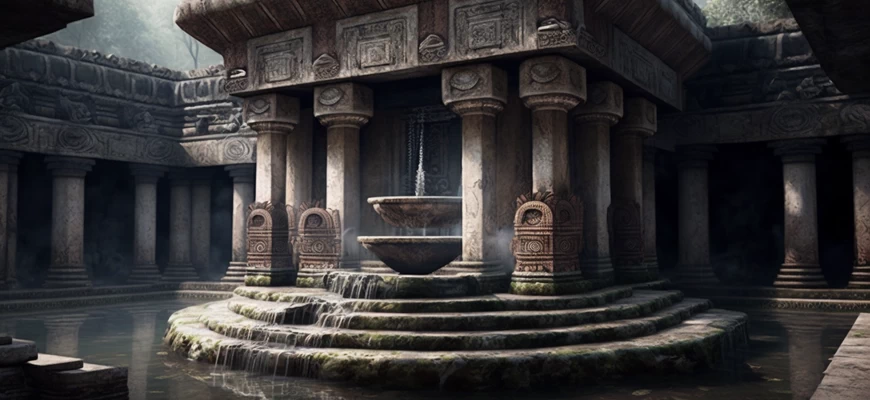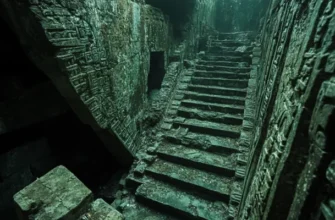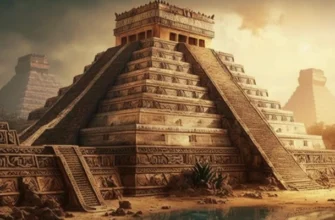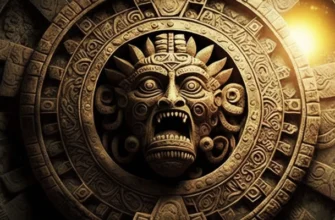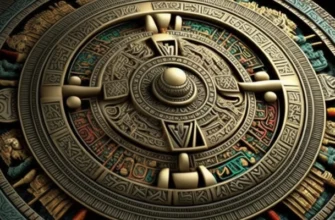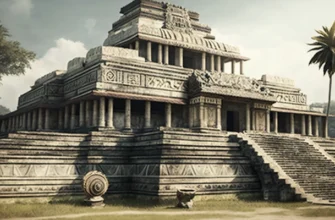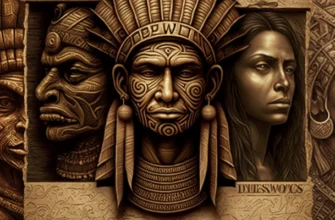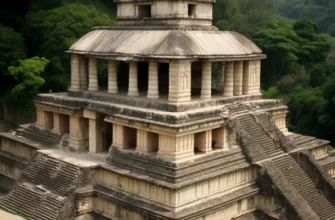The Mayan civilization, which flourished in Central America thousands of years ago, is known for its achievements in astronomy, mathematics, and architecture. However, few people know the ancient Mayans built fountains and flush toilets
Archaeological excavations in the ancient city of Palenque (modern Mexico) have uncovered water pipes made of stone that used natural water pressure to create fountains. Structures resembling toilets with a drainage system were also found. Water was supplied through channels and helped to clean these rooms, which was an incredible achievement for the time.
These discoveries demonstrate the high level of Mayan engineering and their ability to use natural resources to improve the quality of life. This proves once again that this civilization was one of the most advanced in the world.
Mayan fountains
The ancient Maya used fountains for a variety of purposes, including water supply in cities and on farms. They were also used as a decorative element that gave a certain kind of status to the owners of the buildings on which they were located.
Fountains were an important part of ancient Mayan life and had a variety of functions. They were used to supply water to cities and farms, as well as for decoration. Fountains gave the buildings on which they were located a certain kind of status.
One of the most famous Mayan fountains is the Four Leaf Clover, which is located in the city of Palenque. This fountain consists of four stone platforms that are located at different levels, and water flows down from each platform. This fountain was used for religious ceremonies and as a source of drinking water for the city.
Another famous fountain, the Red Barrel, was located in the city of Chichen Itza. This fountain had a circular pool of stone, about 15 meters in diameter, from which water flowed. This fountain was used for drinking water and for religious ceremonies.
Mayan fountains were made of stone and other materials such as terracotta and clay. They could have different shapes and sizes, depending on their function and location.
Although many of the Maya fountains were convenient for drinking water and used for religious ceremonies, there were also those that had a purely decorative function and served as an indicator of the wealth and status of the owners of the buildings on which they were located.
Mayan toilets
The Maya also had a developed system of sanitation, including flush toilets. They used water to flush their waste, which provided them with a certain level of comfort and hygiene. Toilets were usually located separately from living quarters and provided a sufficient level of privacy.
The ancient Maya are known not only for their architecture and mathematics, but also for their water supply and sewage systems. They built flush toilets that were clean and easy to use.
The city of Palenque has one of the best examples of an ancient Mayan flush toilet. This toilet was located in the center of the city, on the grounds of a palace, and consisted of a large room with stone walls and rows of stone-made toilet bowls with flush holes. Each bowl was connected to a plumbing system that provided water for flushing.
There are also several examples of ancient Mayan flush toilets in the city of Kabah. They were located near the central squares of the city and consisted of rows of toilet bowls with flush holes that were connected to a sewer system that provided efficient wastewater disposal.
The Maya toilets were made of stone and were easy to use and clean. They were located near houses and in central squares of cities to be accessible to residents and visitors.
In their toilets, the Maya used water for flushing, which was a very reasonable solution, as they had a large number of water supply systems that provided the necessary amount of water for flushing.
Water supply and sanitation technologies
The Maya used a variety of technologies to provide water and sanitation. They built canals to transport water to cities and farms, and used cisterns to store water. In addition, they built sewer systems that ensured the removal of waste from toilets and other premises.
The Maya were a fairly advanced civilization that used sophisticated water supply and sanitation technologies. Many different engineering structures were found on the territory of their empire, which helped to provide the population with water and healthy living conditions.
One of the most important technological achievements of the Maya was the creation of a sewage system. They built complex networks of canals and pipelines that provided water intake and disposal from cities and towns. In addition, the Maya used reservoirs that collected rainwater and ponds that were water supply systems for businesses and the population.
The Maya also understood the importance of hygiene and a healthy lifestyle. They built huge baths and saunas where people could wash and take care of their bodies. In addition, the Maya were convinced of the importance of water procedures for maintaining health, and used water to treat various diseases.
In general, water supply and sanitation technologies were very important to the Maya. They understood that access to clean water and hygienic conditions were key to the health and well-being of the population, and they made great efforts to ensure these needs.
Conclusions
The water supply and sanitation systems of the ancient Maya were quite advanced for their time and reflected the complexity of this civilization. They used water as a valuable resource and sought to ensure hygienic conditions for their inhabitants.
In general, we can conclude that the water supply and sanitation systems of the ancient Maya were very advanced and quite complex. The Maya used various technologies and engineering solutions to provide access to clean water and create hygienic living conditions.
The Maya sewerage systems used various technologies, including stone channels and clay pipes, which helped to dispose of waste and provide water supply. In addition, the Maya used reservoirs that collected rainwater and ponds that were water supply systems for businesses and the population.
The Maya also took care of hygiene and health by building baths and saunas where people could wash and take care of their bodies. In addition, they used water to treat various diseases.
The final conclusion is that water supply and sanitation systems were very important to the Maya, who understood that access to clean water and hygienic conditions was key to the health and well-being of the population. The study of Mayan water and sanitation technologies helps us to better understand the life and culture of this ancient civilization.
